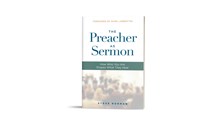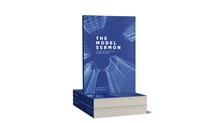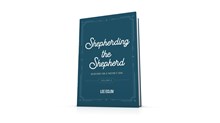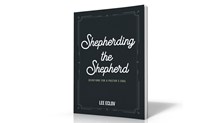
Chapter 138
Footnotes in the Pulpit
How to credit your sources without distracting your hearers
"Now, what was that first book you mentioned? I read the other three, but I never heard of that one."
In a sermon, I mentioned four recent books in which university professors expressed some belief in the concept of intelligent design behind existing life. Now one of my friendly critics wanted information about the first. I knew he wasn't exaggerating about having read the other three. I was glad to be able to recite the author, title, and publication year. I knew he would read that book—and check to see if my attribution was accurate and fair.
To provide arresting and relevant sermon illustrations demands that preachers read widely. When we use others' material in the pulpit, integrity demands that we give proper attribution. But how do we strike the proper balance between too much information and too little in a verbal footnote? The trick is to give our hearers enough background so they can understand, accept, and recognize the importance of the quoted material, but not to bog down or distract from the truth we're trying to communicate.
From my failures and occasional successes, I offer a few suggestions:
Keep it short. If brevity is the soul of wit, it likewise is the heart of helpful attribution. If I give more than one or two sentences of reference, the audience gets lost before the quotation begins.
Consider this example: "Presbyterian preacher and theologian Timothy Keller wrote a three-part series called 'A Model for Preaching' which was published in the Journal of Biblical Counseling back in 1994. In the second part, Fall 1994, on page 42, he wrote, 'The goal of communication must be change, not performance or ritual.'"
Kind of numbs the brain, doesn't it? By the time the pertinent line is delivered, my hearers are trying to guess how many of these details matter. Is the publication date significant? Is the journal title a clue? Is the source's denomination and theological stance leading me to agree or disagree with him?
These details are essential in written footnotes, but only clutter oral presentations. If I want to point out that preaching aims for life change, then I could say, "Preacher and theologian Timothy Keller put it like this: 'The goal of communication must be change, not performance or ritual.'" A name and professional credential will often be enough. Should a hearer request fuller citation, I can provide it. The important thing is that the quote is heard honestly and full force, unobscured by irrelevant facts.
Anticipate doubters' questions. If the hearers are likely to question the material, I include the source where I found the information and the date it was published.
Details help in this case. A vague "many experts believe" or "current studies show" as preface to a startling idea will generate skepticism among hearers. They assume that if many experts actually believed it, I'd be able to name one. Without attribution, this sounds like just another opinion. Remember, we preachers don't like it when someone brings us a bad report that begins, "A lot of people are saying… ."
Consider this approach to a report on the power of prayer: "In a 1992 interview in Christianity Today, senior government researcher Dr. David Larson revealed that scientific studies on the effect of prayer showed that it had a clear beneficial effect on physical and mental health." The date and source of the article, and the professional credentials of the scientist all lend credibility to the information.
Some things are better left unsaid. If my hearers are likely to have access to the source from which I quote, the writer's name and the source are usually sufficient: "In last Tuesday's newspaper, the columnist Thomas Sowell wrote… ."
Skip the reference altogether if most people know the source. Quotes from Poor Richard's Almanac or Aesop's Fables shouldn't need attribution.
But make sure when you cite a source that you get it right. While preaching for a congregation in Michigan, I attributed a humorous line to the wrong man. One sister nailed me. "That was Dr. Will Kellogg, the cereal maker, who said that," she grinned. "He was from Battle Creek, you know, and quite famous long before your time." She hastened to add, "And mine, of course!"
Even accurate attribution can backfire, though, when the source is actually a source of irritation! Briefly a hero to many in Detroit, Lee Iacocca made some unpopular decisions in later years. I once began an illustration by pointing him out as the source. Before I could complete the story, an uneasiness washed across the congregation and several people turned and whispered to their neighbors. My point was sabotaged by the crowd's feelings toward Iacocca. I should have left the story anonymous.
This concept brought to you by… . Footnotes in sermons prove we've done our research. They can lend credibility and power. They allow us to tap the best of expert opinion and the most brilliant wording of ideas. If I am forced to rely solely on my own ingenuity in weaving memorable tapestries of words, I cheat my hearers.
A stirring line like "slip the surly bonds of earth," is stronger when we remind people that President Reagan uttered those lines in eulogizing the Challenger astronauts.
Or "The final test of a leader is that he leaves behind him in other men the conviction and the will to carry on" is made more poignant because it comes from Walter Lippman's tribute to FDR in April 1945.
In a sermon, a few well-chosen words of introduction can prepare our hearers for a quote that really drives home the point. And a little research can allow us to respond with the appropriate information when challenged at the door, "What was that first book you mentioned?"










